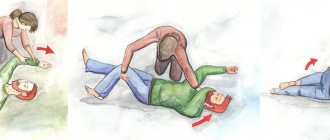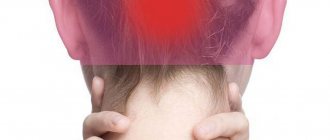Spending a long time in the cold or severe hypothermia can lead to inflammation of the dental nerve. The dental nerve can also become inflamed in hot weather, for example, if the window in your car is open. Inflammation of the dental nerve is an unpleasant disease; it may be indicated by symptoms such as the appearance of painful pulsation, constant aching pain in the tooth. If these symptoms are present, it means you have the nerve of the tooth is chilled. The very first thing to do is to understand which tooth is damaged.
Healthy teeth do not react in any way to temperature changes; usually we do not notice it at all. But if any pathological processes occur inside the dental shell, then from a long walk in the cold you may feel severe toothache. The most correct decision in this situation is to seek help from a dentist.
Dental treatment
If the dentist does not treat the tooth correctly or completely, it can cause swelling in the cheek.
Causes:
- Allergic reaction.
It appears in the patient as a result of intolerance to the components of the filling. To eliminate swelling, you should visit a doctor and replace the installed filling with a hypoallergenic one.
- Removal of a tooth.
If the cheek is swollen after surgery, then the patient probably ignored the doctor’s recommendations and ate solid or hot foods.
- Nerve removal.
Swelling occurs if part of the nerve is not removed. It is important to see a dentist immediately so as not to lose a healthy tooth.
- Gum section.
Usually required to remove accumulated pus. If the swelling does not subside while taking anti-inflammatory drugs, this may be a serious symptom that requires the attention of a specialist.
Causes of periostitis
The cause of periostitis of the jaw can be trauma, as well as an inflammatory disease in the oral cavity - pulpitis, periodontitis, acute gingivitis, etc. More rare causes are rheumatic diseases, venous pathologies, specific infections, allergic reactions, chronic somatic diseases.
The classic variant of the development of the disease is caries complicated by pulpitis. Inflammation spreads to the periodontal tissues, periodontitis appears - inflammation of the periodontal tissues. If left untreated, the periosteum is also affected. In this case, we are talking about odontogenic periostitis - a disease that appears against the background of dental disease.
Ask a Question
What to do if your cheek is swollen
To reduce swelling, you can use one of the following tips:
- Rinse your mouth with a solution of salt and soda.
This remedy has an antiseptic effect and helps destroy pathogens. You can enhance the effect by adding a couple of drops of iodine to the solution.
- Use chamomile infusion to rinse
, sage or other medicinal herbs that have anti-inflammatory properties.
- Apply a cold compress to the swollen cheek
if the swelling is caused by a bite or mechanical injury. This method is contraindicated in patients who have an elevated body temperature or a tumor that develops due to inflammatory processes. Warming compresses are not recommended.
- Lotions with aloe or Kalanchoe juice.
A cotton wool soaked in the juice of the plant is applied to the inside of the affected cheek.
If the described methods do not eliminate the problem, you should seek help from a doctor. The day before, you should not take painkillers and anti-inflammatory drugs, so as not to complicate the diagnosis.
Types and symptoms of periostitis
Periostitis can be acute and chronic, aseptic and infectious. Depending on the nature of the disease, several types of disease are distinguished, each of which is accompanied by typical manifestations. The disease can affect any bones, but most often appears in the lower jaw.
Simple
Simple periostitis of the tooth is an aseptic inflammatory process that develops against the background of a bruise or fracture, as well as in connection with foci of inflammation near the periosteum, for example, in the muscles. The disease is accompanied by moderate swelling of the soft tissues. They rise above healthy areas and pain occurs when touched. Usually the simple form of the disease is well treatable - inflammation can be overcome already on the fifth or sixth day.
Fibrous
Fibrous periostitis is formed during a long-term inflammatory process, begins gradually, and proceeds in a chronic form. Exacerbations may occur from time to time. This form of the disease involves the formation of new tissue on the surface of the jaw.
Serous
The serous form of the disease is accompanied by the formation of an infiltrate - serous exudate appears at the site of inflammation. In the absence of treatment for acute periostitis of this type of inflammation, there is a possibility of the development of purulent processes characterized by a more severe course.
Purulent
Purulent periostitis can be a consequence of infection, for example, with injuries accompanied by damage to the periosteum, the spread of the inflammatory process from other foci (phlegmon). The causative agents of inflammation are often streptococci and staphylococci. The disease is severe, with pronounced symptoms and fever. As a result, fistula tracts are often formed, through which purulent contents are discharged out into the oral cavity. In this case, temporary relief occurs, but the disease does not go away completely.
Acute periostitis with a predominance of putrefactive processes is also distinguished. The periosteum swells, disintegrates, and the purulent contents go directly to the bone, spreading into the soft tissues, which leads to phlegmon of the jaw. This dangerous complication can cause severe consequences and even death.
Symptoms of periostitis depend on the form of the disease, general health, the presence or absence of chronic pathologies, age, etc. Typical signs include the following:
- redness of the mucous membranes of the gums, swelling;
- pain that increases with pressure, chewing, or drinking hot drinks;
- increased body temperature;
- facial asymmetry, cheek swelling;
- enlargement of the submandibular, behind-the-ear, sometimes cervical lymph nodes, etc.
It is worth noting that the purulent form of the disease proceeds faster and is accompanied by symptoms of general intoxication, higher temperature, and irradiation of pain to the temple and ear. Many people note a characteristic pulsation at the site of inflammation.
Which ones are better for chewing teeth?
Implantation of chewing teeth
– the most effective and reliable recovery option. An implant is an artificial root that will take on the entire load when chewing, will not become loose, will not fall out, and will not lead to the loss of neighboring teeth. Implants are long-lasting, you can install a durable metal-ceramic crown on them, and even after the service life of the prosthesis expires, the implant does not need to be replaced.
However, implantation of back teeth may become impossible if a large amount of time has passed since the loss, due to loss of bone tissue. It is possible to perform bone augmentation surgery (sinus lift), but this will significantly increase the time and cost of implantation. In addition, even a sinus lift is not possible in all cases, and each case must be considered individually.
Removable prosthetics
- the simplest and most accessible method. Both soft nylon dentures and plate removable dentures can be used as removable dentures.
Nylon prosthesis
feels more comfortable in the mouth; in case of a terminal defect, it can be attached both to adjacent teeth and to the gum. However, such a prosthesis lasts for a maximum of 5-7 years, and towards the end of its service life it begins to fit worse in the mouth, which is why the patient will need to use additional fixing creams and ointments.
Lamellar prosthesis
(plastic, acrylic or acry-free) - cheaper and more accessible than nylon, but hard and less comfortable in the mouth.
Clasp prosthetics
(in which the prosthesis will be attached to adjacent teeth with hooks or clasps) is possible only in the case of an end defect on both sides of the dentition. This is a more comfortable method of conditionally removable prosthetics, convenient, evenly distributing the load and securely fixed to the teeth. However, if we talk about the loss of chewing teeth, such a prosthesis will have to be attached to the supporting front teeth, which means that the hooks can be noticeable when smiling and talking, which reduces the aesthetics of such a prosthesis. If you take clasp dentures with clasps, you will have to grind down the patient’s neighboring, healthy and intact teeth for fastening, put crowns on them, and only attach clasps to these crowns.
As a result, the most reliable, effective and, ultimately, profitable method of restoring chewing teeth is implant prosthetics. Taking into account the variety of implants
, you can choose an option that suits the patient both in price and quality.
However, each case must be considered individually. An orthopedic specialist will determine possible options for prosthetics of a chewing tooth to make your smile full and attractive. Each specific situation has a specific prosthetic plan.
You can make an appointment at the As-Stom clinic by phone 597-05-05
or using the online application form on the website.
What is an end defect?
Losing the attractiveness and integrity of a smile is a real disaster for most people. But, unfortunately, there are people for whom the loss of a tooth or even teeth is absolutely no reason to see a dentist. Especially when it comes to back molars.
Loss of the back teeth of the upper or lower jaw is called an end defect
– and this is truly one of the most important and complex problems in prosthetic dentistry. First of all, due to the enormous functional load that the posterior (chewing) teeth bear.
“Just think, my back teeth are falling out! You still can’t see them when you smile!”
Of course, this is a misconception. After all, the point is far from being about the beauty of a smile, but about a functional disorder of the dental system, which provokes many serious dental diseases. The absence of back teeth will sooner or later trigger a process of negative consequences in relation to both the central teeth and the smile line.
What can you do before visiting the clinic?
Our dentists' recommendations will help you temporarily reduce discomfort.
- Wet a terry towel with cold water and apply it to the swollen cheek for 10-15 minutes. This compress will reduce pain and swelling.
- Do not heat the sore spot under any circumstances. Do not sleep on this side, do not tie it with a scarf, or apply a heating pad. Is it dangerous!
- Take a small dose of pain reliever. If it doesn't help, drink again after a few hours.
- Regular rinsing with warm infusions of sage, elecampane or valerian helps a lot.
- If your temperature rises, you can take an antipyretic. The medicine didn’t help, but the swelling and fever are increasing? Call an ambulance immediately!
Diagnostics
Dentists and maxillofacial surgeons are involved in determining the cause of swollen cheeks. According to indications, the patient is referred to other specialists: otolaryngologists, ophthalmologists, dermatologists. To clarify the diagnosis, the following procedures can be performed:
- Questioning, general examination
. The doctor finds out when and under what circumstances the cheek began to swell, and determines the presence and dynamics of the development of other symptoms. Detects pain on palpation, changes in skin color and temperature. Evaluates the prevalence of edema and tissue density. - Dental examination.
The specialist assesses the condition of the teeth, gums, oral mucosa, and bone structures. Detects signs of inflammation and suppuration, the causative tooth (if present). - Ophthalmological examination.
Indicated for damage to the lacrimal sac and suspected cavernous sinus thrombosis. It is possible to perform ophthalmoscopy, nasolacrimal test, probing of the lacrimal ducts, and other diagnostic procedures. - Otolaryngological examination
. Necessary for sinusitis, paranasal sinus cyst. Can be supplemented with echosinusoscopy and diagnostic puncture. - Radiography.
An x-ray examination of the tooth is prescribed to clarify the condition of the teeth, an x-ray examination of the jaw or zygomatic bone is prescribed to detect fractures due to injuries of the maxillofacial area, an x-ray examination of the accessory sinuses is prescribed to confirm sinusitis, maxillary sinus cysts. - Sonography
. Ultrasound of the salivary glands is recommended for tumors, adenomas, and other pathologies. Allows you to assess the size and structure of organs, identify stones, space-occupying formations, and signs of inflammation. For symptoms of ENT pathology, an ultrasound of the paranasal sinuses is performed to visualize fluid or tumor. - Lab tests
. Most often, a general blood test is used to confirm the inflammatory process, and a microbiological blood test to determine the pathogen. If a tumor process is suspected, a cytological or histological analysis of the biopsy specimen is performed.
Dental examination








